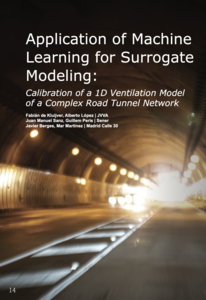
The calibration of simulation models is a fundamental step when aiming tomatch computational predictions with real-world system behavior. In anyphysical model, there are some uncertainties in the definition of the inputs,whether due to the limited availability or quality of data, variability in physicalproperties, or simplifications in the modeling process. When field or experimentaldata are available, they can be used to calibrate the model by identifying the set ofparameter values that minimizes the discrepancy between simulation outputs andobserved measurements. In practice, this corresponds to an optimization problemthat becomes increasingly challenging as model complexity grows.
The simulation of complex models often leads to high-dimensional parameterspaces and significant computational costs during the calibration process.Calibration by directly exploring the parameter space with the simulation model maybecome impractical when each simulation is time-consuming and many evaluationsare needed. To overcome this barrier, surrogate modeling techniques have gainedincreasing attention. These approaches construct a fast approximation of theoriginal simulation model, which can be used within optimization loops tosignificantly reduce computational time. Among these, machine learning-basedsurrogates offer a flexible and scalable solution, particularly well-suited forcomplex, nonlinear systems with large parameter spaces.
In this work, we demonstrate the application of this methodology through thecalibration of a one-dimensional (1D) ventilation model of a complex urban tunnelnetwork. The case study involves Madrid’s M30 tunnels, one of Europe’s largest andmost intricate road tunnel systems. Taking advantage of the availability of real-world data, this example highlights how combining physics-based modeling withdata-driven surrogate techniques enables efficient and accurate calibration, even inhigh-dimensional and computationally demanding scenarios.
This article appeared in the July 2025 Issue of BENCHMARK.



